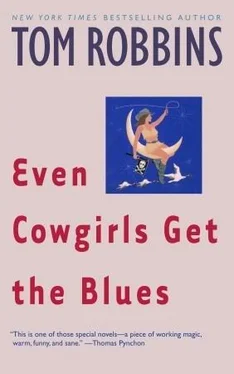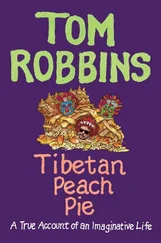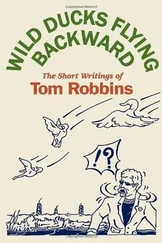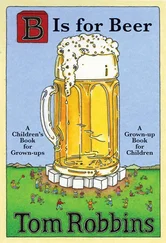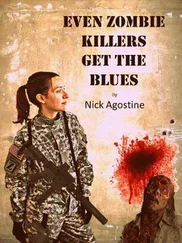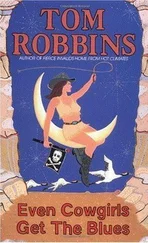In the early fifties, however, a hero cometh, a Batman — or Craneman — winging into the arena on a cape of white quills, goosing the government and causing extinction to duck. The hero's name was Robert Porter Allen, research director of the Audubon Society and no galosh-wearing dispenser of birdseed, he. Allen liked whooping cranes more than he liked statesmen or movie stars or Our Father Who Art in Heaven; he was brilliant, thorough, tough, persuasive and, most important, he had a way with the press. When only nineteen whoopers returned to Aransas in October of 1951, he managed to get the media concerned. And after numerous news reports and editorials were broadcast and published, the government magically began to make a more conscientious effort on behalf of those untamed monsters it had declared its official wards.
The government ran some crane-cheek-colored tape through its red tape machine, and after a few years civilization began to go a mite easier on the whooper, not that the whooper gave a high-circling damn. In 1956, there were twenty-eight cranes wintering on the Aransas preserve. In 1957, the flock decreased to twenty-four. In 1959, the number was up to thirty-two. And so it went. Like scores from the ballpark of the Absolute. And each spring and fall, at times of crane departures and crane arrivals, the media dutifully reported the crane scores, giving them space alongside accounts of the international situation, which was desperate, as usual.
When, in 1969, the whooper population hit a big fat fifty, the media cheered wildly. In 1973, there were fifty-five birds wintering at the Texas refuge, a figure that, when announced, caused hardened cons to smile in their slammers. Or so some folks would have us believe.
At any rate, as sometimes happens in this malleable but not self-malleable curious cultural consciousness of ours, a kind of mystique grew up around the whooping crane, around the drama of its survival. Nonfeathered backs were patted all around, and the whooper was called “a symbol of both this country's new-found concern about its wildlife and of its opportunity to atone for its destructiveness in the past.”
It did not set the national thyroid to pumping happily when it was learned that this symbol, the entire last existing flock of whooping cranes, had vanished without a trace.
79.
"IT WAS A ROUTINE FLIGHT," said the official of the Canadian Wildlife Service, as if there was any such thing as a routine flight. The people who see miracles are the people who look for miracles, the people who open their eyes to the miracles that surround us always. The people who have routine flights are the people who believe they are on routine flights. . but now, what with our whooping cranes AWOL, now is not the time for digressions upon the obvious. The official was as skinny and nervous as the last snake out of Ireland as he fumbled with his pipe and tried to make an important mission sound as if it had been a routine flight.
The flight in question had been made in a two-seat, single-rotary helicopter. The pilot was an employee of the Canadian Wildlife Service, as was the passenger, field biologist Jim McGhee. This May, as every May for the past fourteen years, McGhee had made a “routine” flight over the desolate marshes south of Great Slave Lake, near the Alberta-Northwest Territories border, to count whooping cranes. McGhee would compare his count with the number of birds reported to have left Aransas, Texas, to see how the cranes had fared on their twenty-five-hundred-mile migration. Rare was the year when they didn't lose one bird, but conditions certainly had improved since the fifties, when Canada filed formal protests with the U.S. in an attempt to protect the cranes from American hunters, oilmen and bombers. Yes, whooping crane stock was up a half-million points on the big board, and an investor such as McGhee, who had bought cheap, had every reason to feel smug and to fancy himself on a routine flight when he churned in low over the marshes to check the Dow Jones averages that May.
Back in 1744, a French explorer made the following entry in his journal: “We have [in Canada] cranes of two colors; some are all white, the others pale gray, all make excellent soup.” Well, it was as if some fiendish French fatso from the gluttony wards of Hell had cooked up a cauldron of Campbell's Cream of Whooping Crane, for squint as they might, Jim McGhee and his pilot could not spot a single whooper that day.
McGhee was puzzled, a trifle alarmed, maybe, but not freaked-out. The cranes must have moved, he reasoned. Their nesting grounds had been threatened twice by forest fires since 1970, and despite the Canadian government's maneuvers to bar sight-seers from the area, there had been increasing air traffic over the whooper nurseries in recent years. The five-hundred-square-mile enclave in which birds of this solitary flock chose to build their nests of heaped grass, deposit their mushroom-colored eggs and hatch their sparrow-sized chicks was a mere postage stamp on a vast package of forbidding terrain. It was part of a region that was as rugged and remote as any on the North American continent. Dotted with shallow, muddy lakes separated by narrow zones of spiky black spruce and twisting rivers too choked by fallen timber to be navigable, it had been trod upon by neither white man nor Indian. In fact, the whooper domain was so well hidden it had taken airborne searchers from both U.S. and Canadian Wildlife agencies ten years to find it. As McGhee theorized over a bottle of Uncle Ben's malt liquor in Fort Smith that evening, the cranes could have transferred their nesting area to a different part of the wilderness. Since the birds live in isolated family groups, often separated by as much as twenty miles, it didn't seem likely that the entire flock might have rejected the traditional nesting grounds as if of one mind, but McGhee knew that wild creatures sometimes did the unlikely. McGhee liked wild creatures. He had once elbowed his wife awake in the middle of the night to tell her, quite factually, “Wild animals don't snore.” That was a month before the breakup. Ah, well. McGhee ordered another Uncle Ben's, deciding not to sound a crane panic until he and his pilot had looked further.
The following day, the two men applied closer scrutiny to the usual whooper habitat. They flew so low they were practically sodomized by cattails. No birds. The day after that, they surveyed the area south of the traditional nesting grounds, whirring above the banks of the Little Buffalo River and its marshy tributaries, the logical (?) places for a whooper relocation. Not so much as a snowy pinfeather tickled their eyes. That evening, Jim McGhee radioed Ottawa.
From the capital came the skinny, pipe-smoking official of the Canadian Wildlife Service. He was not yet showing signs of nervousness, but he was soon to be rattling like the muffler on a hula girl's convertible. The official enlisted four additional helicopters in the search. For a week they went through the wilderness the way the Errol Flynn Memorial Panty Raid Society went through the coed dorms at Kansas State University that terrible night in 1961—but with nowhere near the success.
At last the official — O champagne of trembles, O waterfall of bones — had no choice but to notify the insufferable Americans. Both the U.S. Fish and Wildlife Service and the Audubon Society responded at once. It was ascertained and ascertained again that fifty-one whoopers, in groups of one to three families, had left the Aransas refuge during the third week of April. Aransas's superintendent testified that the cranes' mating dances had been unusually athletic that year, but there was no reason to believe that they were having a last fling.
About midway in migration, the whoopers normally stopped for several days of rest and recreation along Nebraska's Platte River. There the stiff-legged birds would stride in agitated dignity, like so many Prince Philips pacing outside the quarters of the queen, as they hunted the river banks for frogs, scratched in the sandbars for mollusks or stalked grasshoppers in the open stretches of high grass. It was standard procedure for governmental agents to take inventory of the cranes during the Platte River stopover, but thereafter to rely for migration information upon voluntary reports from citizens until Jim McGhee made his annual nesting count. This year was no exception, and the wildlife wardens who monitored the cranes in Nebraska now reiterated their reports that the big birds had been all present and accounted for and looking as healthy as rich men's children before the ennui sets in. A farmboy and a telephone lineman had reported seeing separate whooper flights over southwestern South Dakota. After that, nothing.
Читать дальше
